Astronomers have surrendered the sky under construction

The director of the Pulkovo Observatory personally agreed on the construction of the first residential complex near the walls of the observatory near St. Petersburg. The sale of apartments has already begun, the light of which will leave the scientific center, which was once “the main in space” in the country, out of work.
The Pulkovo Observatory near St. Petersburg has been suffering from the approaching megalopolis for several years. Bright city lighting illuminates the stars, and reduces the number of celestial objects observed by astronomers. For several years, it was somehow possible to restrain the onslaught of developers, residential neighborhoods kept aloof from the observatory, and the eponymous airport nearby. In the last decade, gaps in the shadow protection have only punched motorways, large hypermarkets and gas stations. Their bright illumination already affects the quality of scientific data of telescopes, some of which have been successfully and fruitfully operating since the last century.
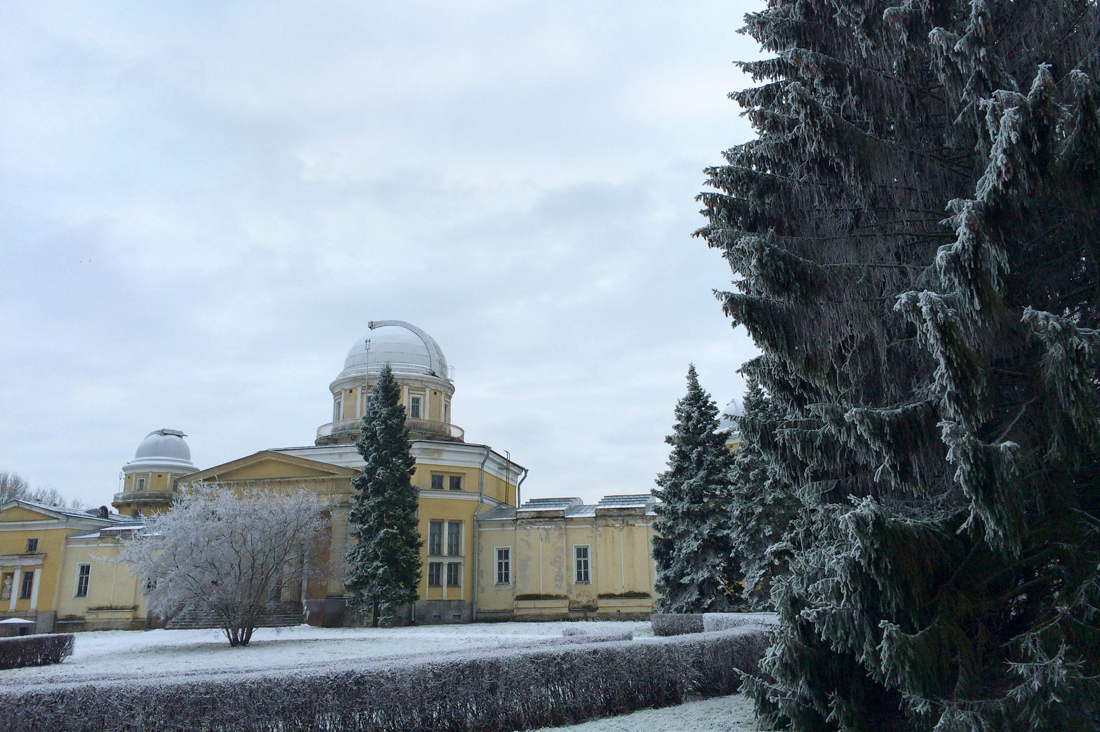
')
Pulkovo Observatory was the largest astronomical and geodesic research institution in the Russian Empire of the XIX century. Thanks to the installed modern equipment, astronomers of Russia were leaders in astrometry — recording the exact position of stars in the sky, recording radiation intensity, studying the movement of stars, and determining the distance to nearby stars. In the twentieth century, this activity continued, and due to the long-term work of astronomers, the unique long-term statistics of the evolution of observed stars over Earth decades has been accumulated.
The Observatory and its scientists make a great contribution to the study of the small bodies of the Solar System , binary and multiple stars, the major planets and their satellites, dangerous asteroids and near-earth debris. Pulkovo telescopes participate in the study of exoplanets, recheck and confirm the discoveries of other researchers, find approaching asteroids, observe satellites of the planets of the solar system, participate in the program of ground support for the Gaia space telescope.
The work of 2010 to determine the parallax of stars at the Council on Astronomy of the Russian Academy of Sciences received the status of the Most Important Achievement of the Academy of Sciences, for accuracy comparable to the accuracy of observations of the Hipparcos space telescope. In the database of the NEODyS project (an international project that collects observations of asteroids dangerous for the Earth), data from the Pulkovo Observatory occupy about half of all observations of all Russian observatories combined. And there are more than thirty of them.
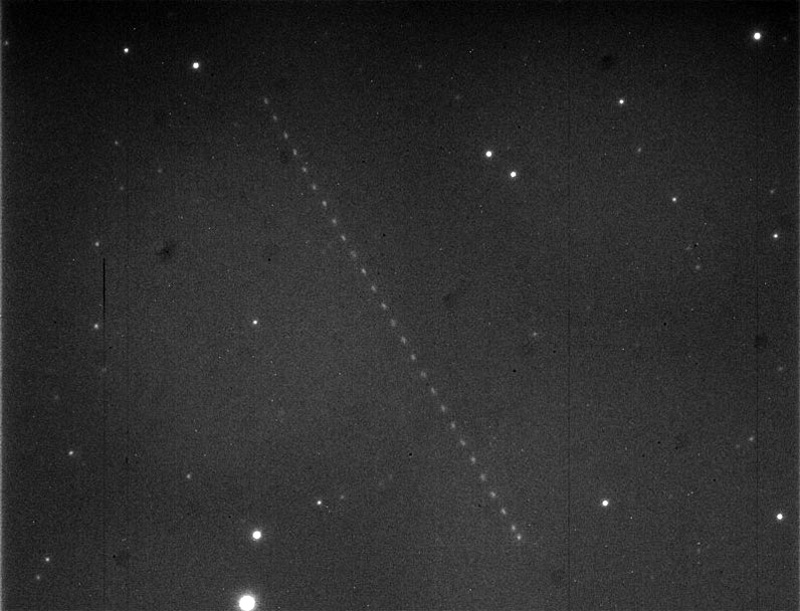
Near-Earth 600 m asteroid 2015 TB145 distance of 480 thousand km. Shooting in a large refractor.
It would seem that the climate of St. Petersburg is not very conducive to observations of celestial objects, but the location on a hill, and the modernization of telescopes increases the possibilities.
In 2007, the Big Refractor — Pulkovo’s pride — installed a modern digital system with a CCD array, which improved the quality of observations by an order of magnitude. Over the past 10 years, it was possible to conduct observations more than the previous 60.
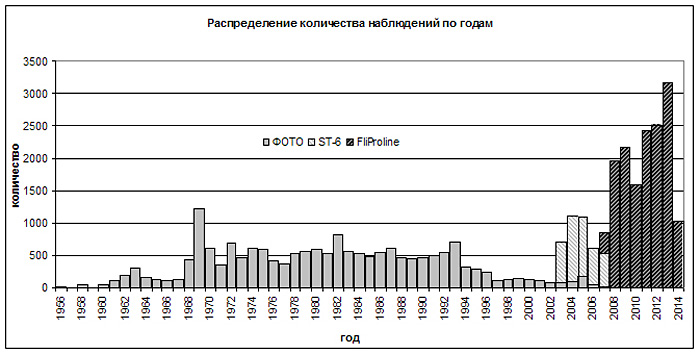
Pulkovo weather gives an average of 150 clear nights suitable for observation, thanks to a modernization that allowed the use of even short-term clarifications. Own development of scientists Pulkovo, implemented on the Big Refractor - a system for tracking the weather, based on street webcams. The cameras record the state of the sky, and if gaps in the clouds are visible, the telescope starts up in automatic mode.
Surprisingly, it’s a fact: the work of the Big Refractor costs the state budget 11 thousand rubles a year - only electricity is actually paid, and the scientists and volunteers of the St. Petersburg Astronomical and Geodetic Society carry out engineering and technical work, the equipment is repaired through grants and donations.
Recently, by scientists, the meter (in diameter) reflector telescope “Saturn” , which was created in the 70s to observe the sun, was restored and reworked for night observations, and then lay in a warehouse for several decades. Modernization of its optical scheme in a medium-focus telescope with a large aperture made it possible to use it to observe very weak or fast moving objects, such as small asteroids or distant satellites.
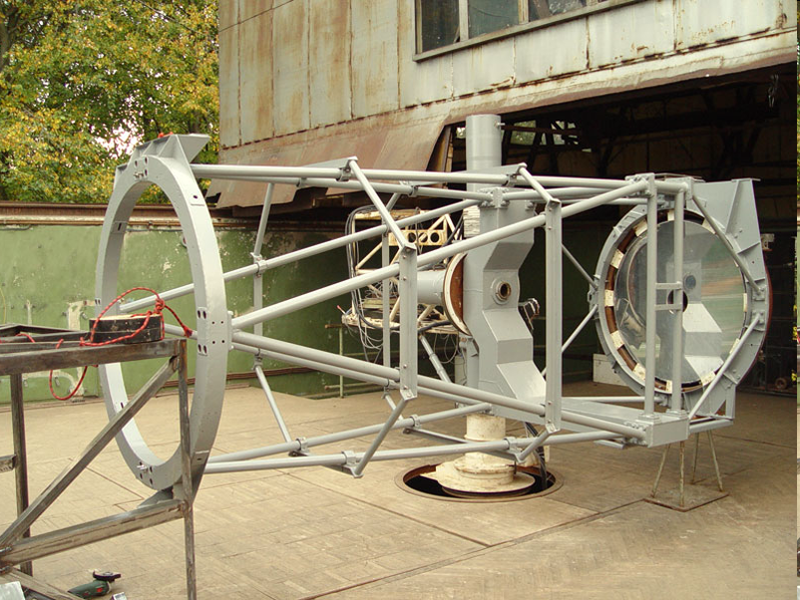
If you can somehow cope with the St. Petersburg weather with modern means, then the approaching illumination becomes a permanent unsolvable problem. As the city advances, the dimmest of observed stars gradually go out. Astronomers have long been sounding the alarm about this. On the side of the observatory is the disposal of the Council of People's Commissars of 1945, which has the legal force of the order of the Government of the Russian Federation; 1996 city position, about a 3-kilometer protective zone; The rules of building and land use in St. Petersburg - prohibiting large residential and industrial construction closer than 3 km from the scientific center, allowing to build something else only in coordination with the observatory.
It is clear that today the situation of 1945 is a weak hope in the defense of attractive land for construction. Nevertheless, thanks to the efforts of the staff of the observatory, public resonance, support in the St. Petersburg and federal press, the help of some politicians, the bastion held on.
The final right to approve development projects was left to the leadership of the Pulkovo Observatory, and to eliminate the danger of corruption collusion, the scientists formed the Astroclimate Commission from the staff of the observatory. Astronomers who are members of the commission should evaluate the proposed city-planning projects from the point of view of possible harm to observations and submit their assessment to the Academic Council of the Observatory, which openly discusses the project and makes a decision. Without an assessment of the Astroclimate Commission and without a decision of the Academic Council, the management cannot agree on the projects of developers. At least that’s what the Observatory’s charter says.
However, in October 2016, the director of the Pulkovo Observatory approved the plan for the construction of a residential neighborhood within a 3-kilometer protective zone, bypassing the Commission and the Academic Council. In December, on the outskirts of the observatory, the first construction equipment was noticed, fencing off the future construction site, and an advertisement for apartments in the future complex appeared on the site of the building company.
Of course, many researchers do not agree with the actions of the director, whom they themselves have chosen a year ago. Sympathetic citizens in the network posted a petition to attract the attention of the public and the media. There you can sign and express words of support. At the same time, statements are being written to all relevant authorities ...
Today, it may still turn out to stop the developers, although it seems that the observatory cannot endlessly confront the growing city. Thanks to space photography, one can see how St. Petersburg has been approaching Pulkovo in recent years.
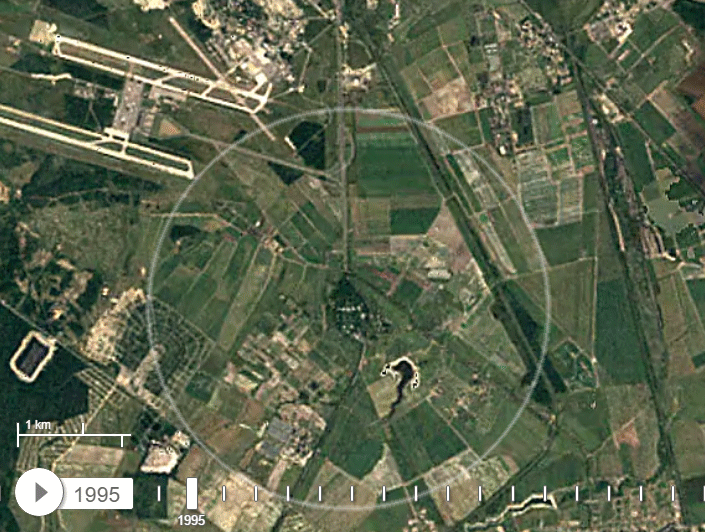
On the scientists' side, there is also the airport of the same name, which significantly hinders the expansion of the city in this direction. The only highway in this direction is already overloaded, so the construction of neighborhoods of tens of thousands of inhabitants on it can turn into a traffic collapse.
Sooner or later the bastion will fall, and the scientific value of the observatory will be reduced by orders of magnitude. Even now, the Pulkovo Observatory is the only one in the world that has remained operable at such a distance from the megalopolis.
Unfortunately, it is impossible to transfer the observatory. Assembling and running the telescope is half its cost, so it’s wiser to leave the tools at the historic site and install new ones in the new observatory. Plus, during the transfer all the statistics of observations will be cut off, you will have to start all over again in the new place, canceling the previous half century of work. It is possible to build a new observatory, but neither the Russian Academy of Sciences nor Pulkovo plans this yet. The state has no means for that. In an ideal world, the money to create a new observatory should be taken just from the pressing developers, but this can only be dreamed of, since we are talking about tens of billions of rubles.
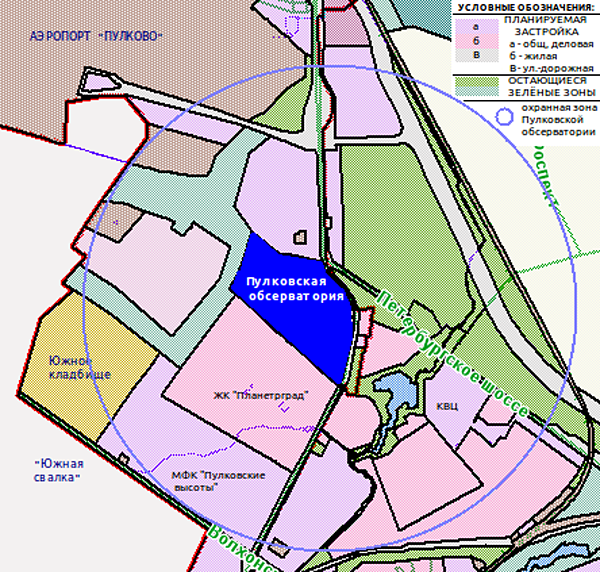
The very same complex of Pulkovo could be turned into a center of education, popularization of science and technology, into a place for cultural and intellectual rest of citizens and tourists.
Now the Pulkovo Observatory is a pleasant, quiet country park, where you can walk in the shadow of half-century fir trees and telescope domes. There are often guided tours, with a demonstration of the museum and some telescopes.
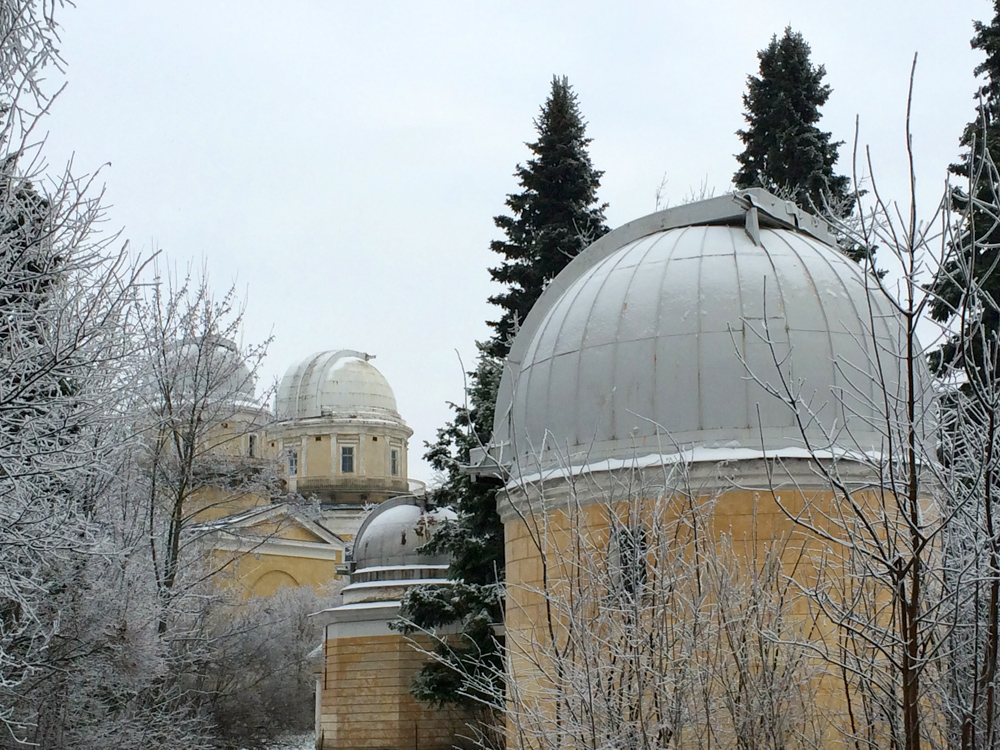
There are many examples in the world of how an observatory that has lost its previous scientific significance continues to exist as a museum and exhibition area - for example, the Greenwich Observatory in London, the Lowell Observatory in the USA or the Engelhardt Observatory near Kazan, where ancient telescopes that have lost their scientific value have become museum exhibits, and nearby modern planetarium, where visitors will find the latest scientific data on the solar system and the universe.
However, the unique position of the Pulkovo Observatory near the northern capital, and the continuing performance, would allow to create a no less unique scientific and cultural object - an astronomical park-museum, allowing not only to study the history of astronomy in general and the Main Observatory of Russia, but also to see live telescopes in action that carry out current scientific tasks, albeit for educational purposes. Now in St. Petersburg, astronomers are preparing SPSU at the Department of Astronomy, the Faculty of Mathematics. To go to practice in Pulkovo is easy and simple at any time of the year, if you transfer the observatory, the possibilities will decrease.
Pulkovo already has its own unique telescope in Chile, created and installed back in the Soviet years in the Andes with the perfect astroclimate. More precisely, the Chilean government is ready to donate a telescope under the control of Pulkovo astronomers, subject to its repair and modernization, for which there are no funds. Astronomers even thought of going to a Boomstarter to raise money, but they did not dare to go out into people “with an outstretched hand”.

At the same time, the use of external observation platforms is more expensive due to transportation costs and distance from the necessary workshops and factories. But no, even ultramodern, telescope in Chile is not capable of replacing the Pulkovo telescopes - this is another hemisphere, which means that we will not be able to continue the observations of previous years.
With the help of scientists from Pulkovo, an international network of small automatic telescopes ISON has been deployed, but they are only engaged in observing space debris and detecting near-earth asteroids and comets . All the scientific problems that are being solved at the Pulkovo Observatory now will not be solved by ISON. There are two more remote telescopes: infrared in Italy, and near Kislovodsk, but they are also few.
If astronomers decide to collect money for telescopes or moving, I will definitely write about it. In the meantime, you can support them with the signature of the petition, or, if there is a need for this, write them directly - I can send you contacts.
Source: https://habr.com/ru/post/373051/
All Articles